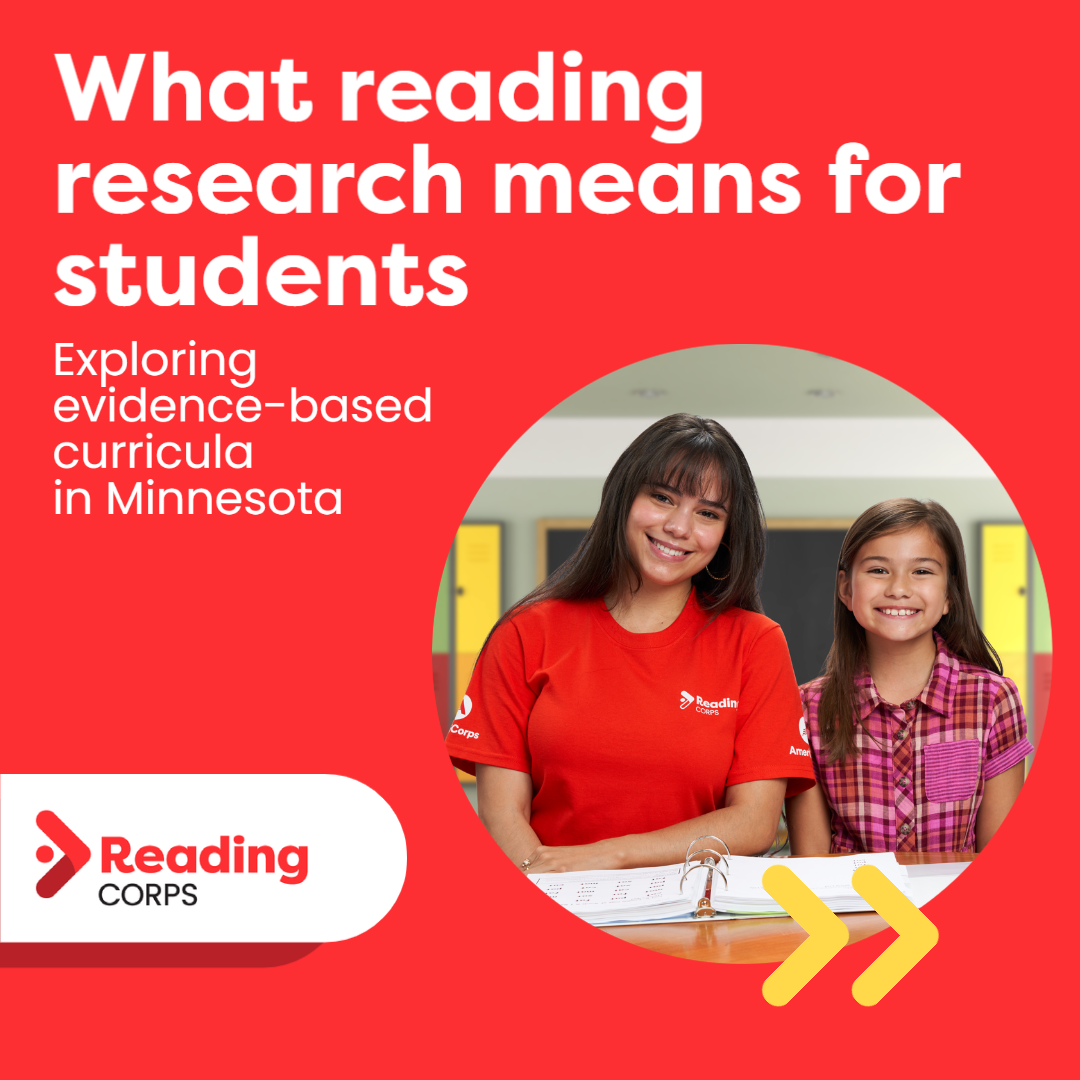This story was published originally by ServeMinnesota.
Once you learn to read, it’s hard to remember how you actually learned to read in the first place. Reading these words might come so naturally to you that you don’t really think much about it.
You might think, learning to read must have been like learning to speak, right? So if you’re surrounded by enough written words, you’ll eventually figure it out.
But for most students, that’s actually not true. Learning to speak and learning to read are two very different processes. Most kids actually require set steps showing how letters are connected to sounds – otherwise they just won’t learn how to read.
Reading takes center stage
During the last year, reading instruction and literacy curricula have been a central focus of legislatures across the country. That’s true for the Minnesota legislature, too – this May, they passed the READ Act, which will invest over $90 million in literacy education. The work of education reporter Emily Hanford had a big role in sparking national interest in this topic, in part through her podcast Sold a Story, which delves into how the process of learning to read works. Hanford shows that widely used reading curricula from the last 10-20 years have been based on a flawed idea: that many kids can learn to read purely by using context cues and being around engaging books.
Program directors of Reading Corps have known that approach doesn’t work for decades. Its program model is based on learning science that shows intentional instruction is a crucial part of teaching kids how to read. Every time Reading Corps tutors help students learn to read, they use science-backed instructions.
Keep in mind: reading experts aren’t saying that students shouldn’t be exploring lots of different books or practicing reading comprehension. On the contrary, reading lots of books is essential to learning how to read – and it’s a huge part of the joy reading can bring. But they are saying that students can’t get to that fun part without that explicit, evidence-based instruction on how to recognize words as well as sounds. Especially in the early elementary years, students need a strong mix of that explicit instruction and free reading time.
Meeting students where they are
So what exactly are these science-backed instructions Reading Corps students get? And how do they align with the READ Act?
Each Reading Corps activity is designed for students to get comfortable with letters and words – and have some fun along the way, too. Some activities help students match letters together with the right sounds, and others help students read words. Activities might look like:
- The tutor asks students to say each sound in a word, then blend them together to say the whole word. For example, the student would say each sound in the word “fig” individually (“f”, “i”, “g”), then say the whole word together. This activity is focused on spoken sounds, not written letters and words.
- The tutor shows students flashcards with different letters on them. Then, they ask students to say the sound the letter shown makes.
- The tutor shows students a written word and asks them to say the sound of each letter in that word. Then, they ask the student to put all the letter sounds together to sound out the word. For example, the student would identify each sound in the word “let” individually (“l”, “e”, “t”), then put the sounds together.
The activities might seem straightforward. But for students learning to read, it often takes a lot of intentional practice to really understand how letter sounds work. It’s completely new to them. Practice helps them make those connections so they have the tools to move on to chapter books and complex reading comprehension.
Another reason why this process is so effective: Tutors only work on activities with students that can build on the skills the student already has. Students complete activities that determine what reading skills they do have – for example, whether or not the student can match printed letters to the sounds they make, or how many words from a certain text a student can read in a minute. Tutors don’t skip to activities that won’t make sense to the student yet.
As for the READ Act, the legislation provides funding to school districts across the state that choose approved, evidence-based curricula. Approved curricula will have a proven record of success in teaching students sound recognition, vocabulary development, reading fluency, and reading comprehension as well as phonics. Teachers will also receive evidence-based training and have access to a literacy coach. In January of 2024, the Minnesota Department of Education will share approved curricula school districts can use.
To dive even deeper into how learning to read works, check out Emily Hanford’s podcast, Sold a Story. You can also dig into the details with technical texts like The Essentials of Assessing, Preventing and Overcoming Reading Difficulties by David Kilpatrick. Read more about the results Reading Corps gets in these past blog posts, or explore the work of the National Science and Service Collaborative, which powers evidence-based programs including Reading Corps.
If you are interested in using science to help students in your community improve their reading skills, visit Join.ReadingandMath.Org to find a school near you. Apply by October 4 to begin serving in late October!
